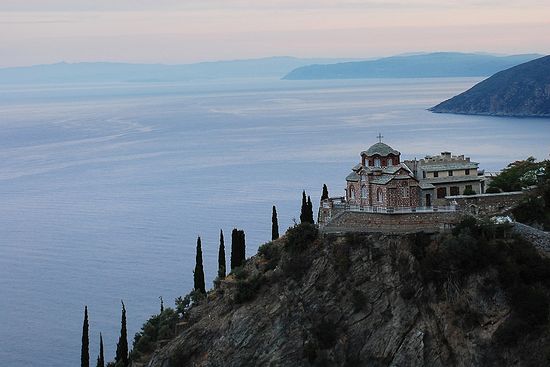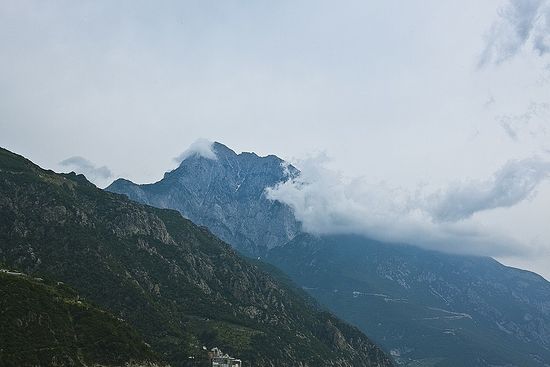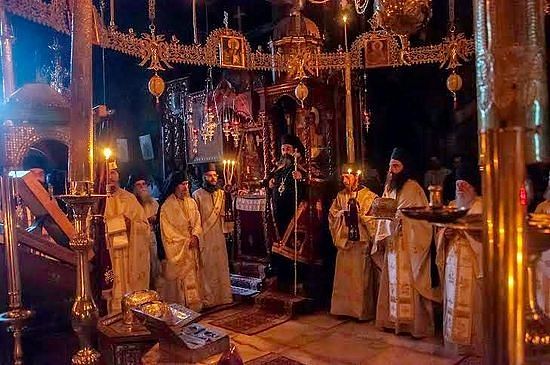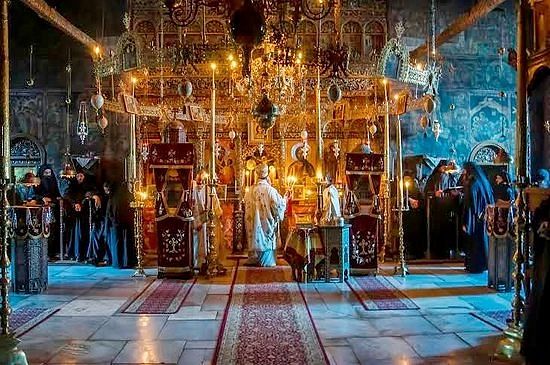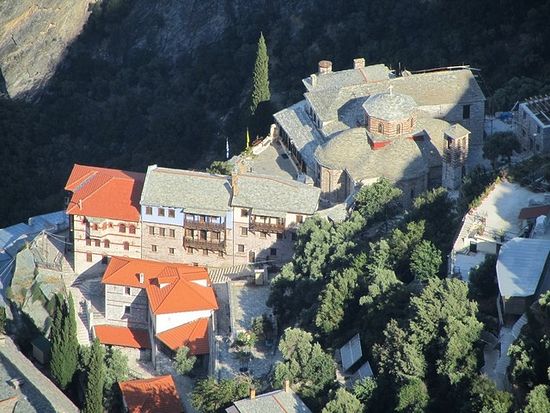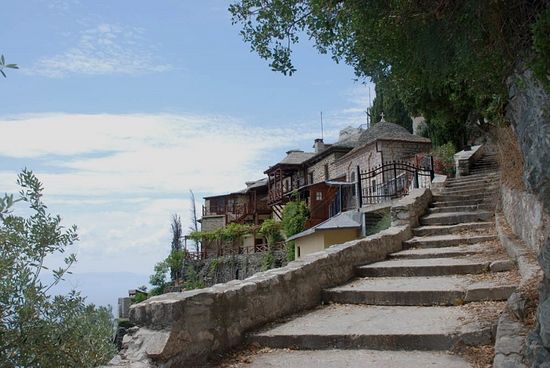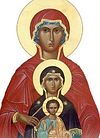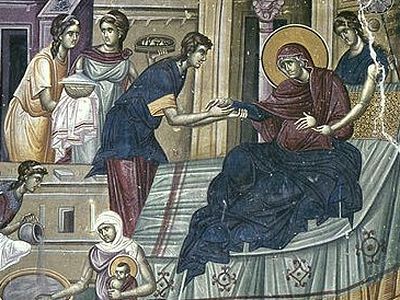Today the Church celebrates the Dormition of Holy Righteous Anna, the Mother of Mary the Birth-giver of God. This is the day that St. Anna departed this world. The monks of Mt. Athos, the reigning Abbess of which is the Most Holy Theotokos, have always had a special veneration of St. Anna. The website of the Greek Orthodox Church of St. Anna in Roseville, California, where a relic of St. Anna is reverently kept, talks about the Skete of St. Anna on Mt. Athos:
The Skete of St. Anna is the oldest and the largest Skete of Mount Athos, remaining in the spiritual care of the Great Lavra. It is located on the southwestern shore of the peninsula, situated some 500 meters up on the cliffs above the sea. The Skete is accessible either by boat, one hour from the port of Daphne, followed by a climb of over 2,000 steps from the sea floor (approximately one hour hike) or by foot, a six and a half hour hike from the aforementioned monastery.
The main Church of the Skete, the Kyriakon of Saint Anna, was built in the middle of the seventeenth century. In the eighteenth century, the Church was expanded and fully ornamented with frescoes. The library which is attached to the Church contains some 100 manuscript codices, of which three are on parchment. The treasures of the Skete include the left foot of Saint Anna, a piece of the Holy Cross, the Holy Relics of at least seventy other saints, and a miracle working icon depicting Saint Anna and her daughter Mary.
Approximately 120 brothers are attached to one of the 50+ brotherhoods of the Skete of St. Anna, most with their own residence and chapel. These brothers maintain a discipline of work, prayer, self-reflection and study. During the summer months, they also offer hospitality to their over 100 pilgrims a day. The community is administered by a Dikaios, superintendent, who is elected from among the brothers to serve the term of one year.
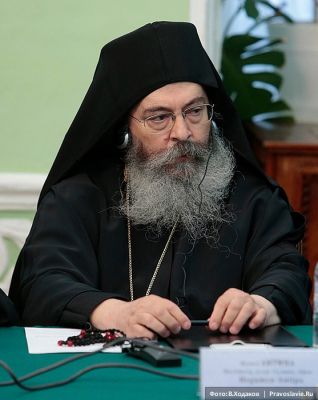 Abbot Antipa of the Skete of St. Anna, Mt. Athos, at a conference on monasticism in Moscow.
Abbot Antipa of the Skete of St. Anna, Mt. Athos, at a conference on monasticism in Moscow.
One of the elders of the Theophileon Brotherhood was the priestmonk Anthimos who reposed in 1996. Father Anthimos is considered to be one of the most recently identified “saints” of the Athonite peninsula. His relics are enshrined within their chapel, dedicated to the Feast of the Presentation of Mary to the Temple, commemorated on November 21. Three brothers currently reside in this kalyva - the V. Rev. Fr. Cherubim Apostolou, the V. Rev. Fr. Theophilos Kougioumtzidis, and the V. Rev. Fr. Anthimos Igglezis.
The religious writer Constantine Cavarnos has written about his experience of the All Night Vigil for the feast of the Dormition of St. Anna, the Skete’s patronal feast. Here is an excerpt from his book, The Holy Mountain (Institute For Byzantine and Modern Greek Studies (2nd Edition, 2001):
I went by motorboat to the arsanas (landing place) of the Skete of St. Anna, on the southern side of the Athos peninsula, in order to go up to the Skete and attend the feast in commemoration of the Dormition of Saint Anna, to whom this settlement of hermits is dedicated. This Skete is built on an abrupt slope a good distance from the sea. To reach its main church (known as the kyriakon, because the monks of the settlement gather in it on Sundays (Kyriake) for corporate worship), I had to walk uphill a for about half an hour.
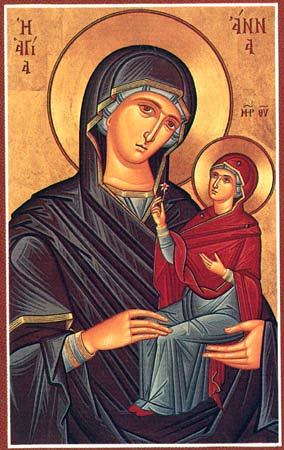 St. Anna, the Mother of the Theotokos.
St. Anna, the Mother of the Theotokos.
When the priest said in a loud intoned voice: 'With fear of God, with faith and with love draw near,' many of the monks and lay guests moved forward to the Beautiful Gate to partake of Divine Communion.
After the Liturgy, food was offered in the refectory to all who had attended the services.
When the meal was over, one of the monks of the Skete, a retired Metropolitan named Anthimos, delivered a moving speech, in which he related the celebration to the goals of monasticism. The chief purpose of this event, he asserted, is to lift us to God and His saints, and to arouse our zeal to imitate Saints Anna and Joachim, to strive to acquire their virtues, to rid ourselves of 'passions' (negative emotions) and evil thoughts, to cleanse our soul of everything impure, so that we might attain happiness in the other, endless life, and so far as possible in the present life also.
Pilgrims to Mt. Athos from all over the Orthodox world have for centuries visited the Skete of St. Anna and venerated her relics with great reverence and piety.
